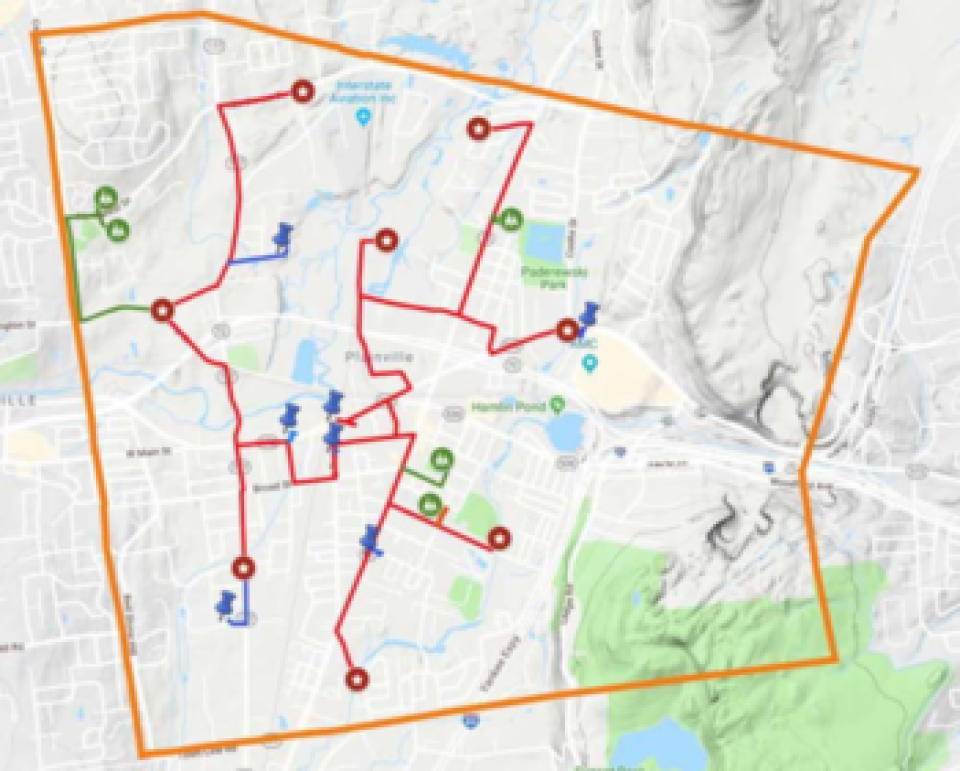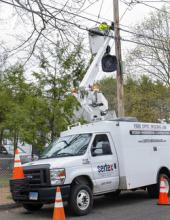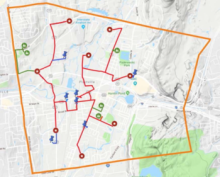
Fast, affordable Internet access for all.

After working over a year to obtain licenses to deploy fiber across town, by this time next week the central Connecticut town of Plainville, home to approximately 17,500 residents, will begin construction of a municipal fiber network. When finished, the network will connect all town offices, public education facilities, public safety services, and wastewater treatment facilities.
Over a decade after high-speed fiber connections linking the town’s municipal center and a local high school to the statewide Nutmeg Network were first established in Plainville, multiple municipal buildings throughout town still lacked reliable broadband connections, and some had not been connected to the Internet at all.
With locally-based construction firm Sertex set to begin laying fiber for the townwide institutional network (I-Net) next week, which will include “12.5 miles of aerial cabling and three underground spans running beneath major highways,” that’s all about to change for the relatively dense, 10-square-mile community, reports Sertex.

Using money the town was able to save through its five-year Capital Improvement Plan [pdf], Plainville will pay Sertex about $750,000 to build the fiber network. Plainville will own the fiber infrastructure, eradicating recurring charges the town paid to both Comcast and Frontier to lease telephone, cable and fiber connections. The cost savings the town will enjoy because of the fiber network are expected to be in the range of $40,000 per year. “We saw [the network] as something that would pay for itself over time,” Plainville’s Town Manager Robert Lee told ILSR, in an interview.
Fiber Brings Efficiency and Resiliency to Town
The I-Net will better coordinate and introduce new capabilities to Plainville’s town operations and improve the overall efficiency and resiliency of internal communications – benefits that are hard to measure the value of in dollars and cents. The fiber network will allow all town services to operate over the same phone and Internet network, which will especially aid public safety, education, and waste management services.
Previously, Plainville experienced issues with the town’s police communications system when some of the repeaters would occasionally go offline. The repeaters, devices which receive and retransmit signals to boost the range and coverage of communication, are also easily obstructed by hills, buildings and trees. The new fiber I-Net will boost reliability so that emergency services are far less likely to be hindered. It will also allow the town to test out other technology to support public safety, such as the possibility of using security cameras throughout the community.

The network will also reduce inefficiencies in the management of Plainville’s wastewater system. Tasks that previously required workers to drive and be present on-site, such as resetting a button, will now be monitored and handled remotely, saving the town money in the long-run.
Furthermore, each of the town’s education facilities will now operate on the same servers, allowing public schools to easily share resources and information. Another added benefit of the network is that it will be more resilient in the face of Connecticut’s winter storms.
Expanding the I-Net to Meet Residents
When initially deciding to construct the I-Net, Plainville’s town leaders hoped at some point in time the fiber network would be expanded to provide high-speed Internet services to residents as well.
Though at this time, Plainville’s Town Manager Robert Lee said he is not sure whether the town will pursue a fiber-to-the-home (FTTH) build, with the I-Net in place, the town is free to explore the option.
Currently, fiber Internet access in Plainville is only available through Comcast. However, according to Lee, the monthly cost of service is very expensive, causing many residents to opt for the only other Internet access option in town: DSL-service through Frontier. Still, Lee said, Plainville residents who have DSL through Frontier are dissatisfied with the limitations of the outdated technology, yet many are also unwilling to step up to Comcast’s more exorbitant fiber service.
“People who already have the service think it’s too expensive and they’re looking for competition," said Lee. “Something cheaper than Comcast would be better for them, we’re hoping it would be better for our businesses as well.”
Plainville Leads the Way
Plainville is at the leading edge of towns in Connecticut making a foray into the realm of municipal fiber and has an opportunity to show proof of concept to other communities in a state that has very few municipal networks. In many Connecticut communities residents and businesses are longing for better Internet service options, which includes more rural towns stuck with dial-up service or without any Internet access at all.
A 2019 Supreme Court decision could assist communities looking to improve local connectivity. In that case, the Supreme Court ruled that Connecticut’s Municipal Gain Law gives local communities reserved space on utility poles to string publicly owned communications infrastructure, for no attachment fee. The 2019 verdict found that providing Internet service was considered eligible municipal use, granting Connecticut’s towns the opportunity to take advantage of the Municipal Gain Law by stringing fiber and partnering with private providers to offer residential services.
Header image courtesy of Wikimedia user Kenneth Zirkel via Creative Commons Attribution-Share Alike 3.0 Unported license.
Sertex technician and I-Net map images courtesy of Plainville, CT Town Manager Robert Lee.


